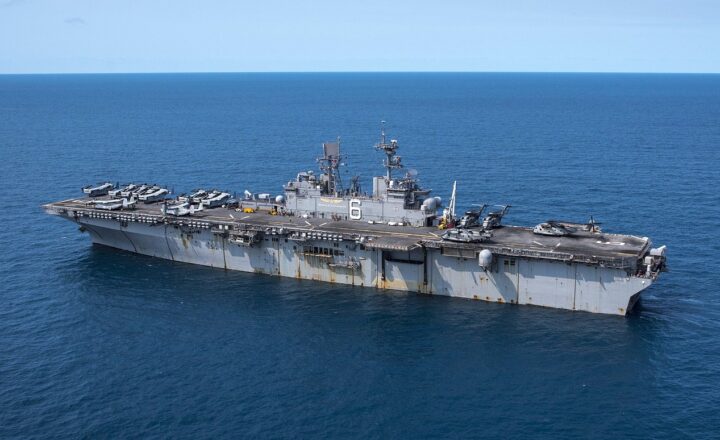The Most Ingenious Underwater Weapons Created for Naval Warfare
November 11, 2024

Naval warfare has evolved dramatically over the centuries, and so have the weapons utilized beneath the waves. From ancient harpoons to advanced torpedoes and unmanned underwater vehicles, the arsenal available for undersea combat is both diverse and sophisticated. This article delves into some of the most ingenious underwater weapons developed for naval warfare, examining their design, capabilities, and strategic impact.
1. The Evolution of Underwater Weapons
The history of underwater weaponry can be traced back to early civilizations. The ancient Greeks used diving devices and rudimentary underwater explosives to disrupt enemy vessels. Over time, innovations such as the submarine and modern torpedo transformed naval warfare profoundly.
The 20th century marked a critical turning point with the introduction of advanced submarines and torpedoes, followed by the development of sophisticated naval mines and drones. Understanding this evolution provides insight into the technology that shapes contemporary naval power.
2. Torpedoes: The Pioneers of Underwater Warfare
Torpedoes have become synonymous with naval warfare, representing a significant leap in offensive capabilities. These self-propelled weapons are designed to target and destroy enemy ships or submarines from a distance, offering strategic advantages by striking without direct engagement.
Types of Torpedoes
– Guided Torpedoes: Using sophisticated targeting systems, these torpedoes can adjust their course in real-time to home in on threats. Modern examples include the U.S. Navy’s Mark 48.
– Unguided Torpedoes: Less complex, relying on a set trajectory, but still effective in mass attacks. The influence of early models like the Whitehead torpedo remains evident.
Advancements in torpedo technology continue to enhance their stealth, speed, and explosive power, ensuring they remain a cornerstone of underwater combat.
3. Submarines: The Silent Hunters
Submarines represent one of the most formidable innovations in naval warfare. These underwater vessels can carry an array of weapons systems, including torpedoes, cruise missiles, and unmanned drones, allowing them to engage in both offensive and defensive operations.
Key Submarine Technologies
– Nuclear-Powered Submarines: Offering unparalleled endurance and operational range, these submarines can remain submerged for months, providing strategic deterrence.
– Stealth Technology: Advanced hull designs and quiet propulsion systems make modern submarines difficult to detect, enhancing their survivability and effectiveness on stealth missions.
The combination of advanced armaments and stealth capabilities has positioned submarines as pivotal tools in naval strategy.
4. Naval Mines: Silent Yet Deadly
Naval mines are one of the oldest forms of underwater weaponry, designed to detonate when a ship passes over or comes into contact. They can be deployed in various environments and have been effective throughout naval history.
Types of Naval Mines
– Contact Mines: These mines detonate on physical contact with a vessel, requiring proximity to be effective.
– Influence Mines: Activated by the physical properties of a ship—such as pressure from its hull or magnetic signatures—making them versatile and dangerous.
Naval mines can create significant strategic obstacles, forcing enemy ships to exercise caution, thereby controlling maritime routes without direct confrontation.
5. Unmanned Underwater Vehicles (UUVs): The Future of Naval Warfare
As technology advances, unmanned underwater vehicles have emerged as a game-changer in naval warfare. These robotic platforms can conduct reconnaissance, deliver payloads, and even engage enemy assets without risking human lives.
Applications of UUVs
– Reconnaissance and Surveillance: UUVs can gather intelligence in hostile environments, providing critical information to naval forces.
– Mine Countermeasures: Equipped with tools for detecting and disabling naval mines, UUVs enhance safe naval operations.
The utilization of UUVs marks a significant shift in how navies approach underwater warfare, prioritizing safety and efficiency without sacrificing capability.
6. Future Trends in Underwater Weapons Development
The future of underwater weaponry holds exciting possibilities. Ongoing research focuses on developing hypersonic torpedoes, advanced stealth technologies, and AI-driven systems that enhance targeting and lethality.
Scientists and engineers are also exploring biological and eco-friendly options to minimize environmental impact while maintaining effectiveness in warfare. The integration of these technologies could redefine naval strategies in the years to come.
Conclusion
Underwater weapons have come a long way, showcasing human ingenuity and technological advancement. As naval warfare continues to evolve, understanding the tools available to naval forces is crucial for comprehending current and future maritime conflicts. The remarkable designs, capabilities, and strategic implications illustrate why underwater weaponry remains a fundamental aspect of naval power.
In summary, the ingenuity behind these underwater weapons ensures that they will play an essential role in naval strategy, adapting to new challenges and threats in an ever-changing global defense landscape.







